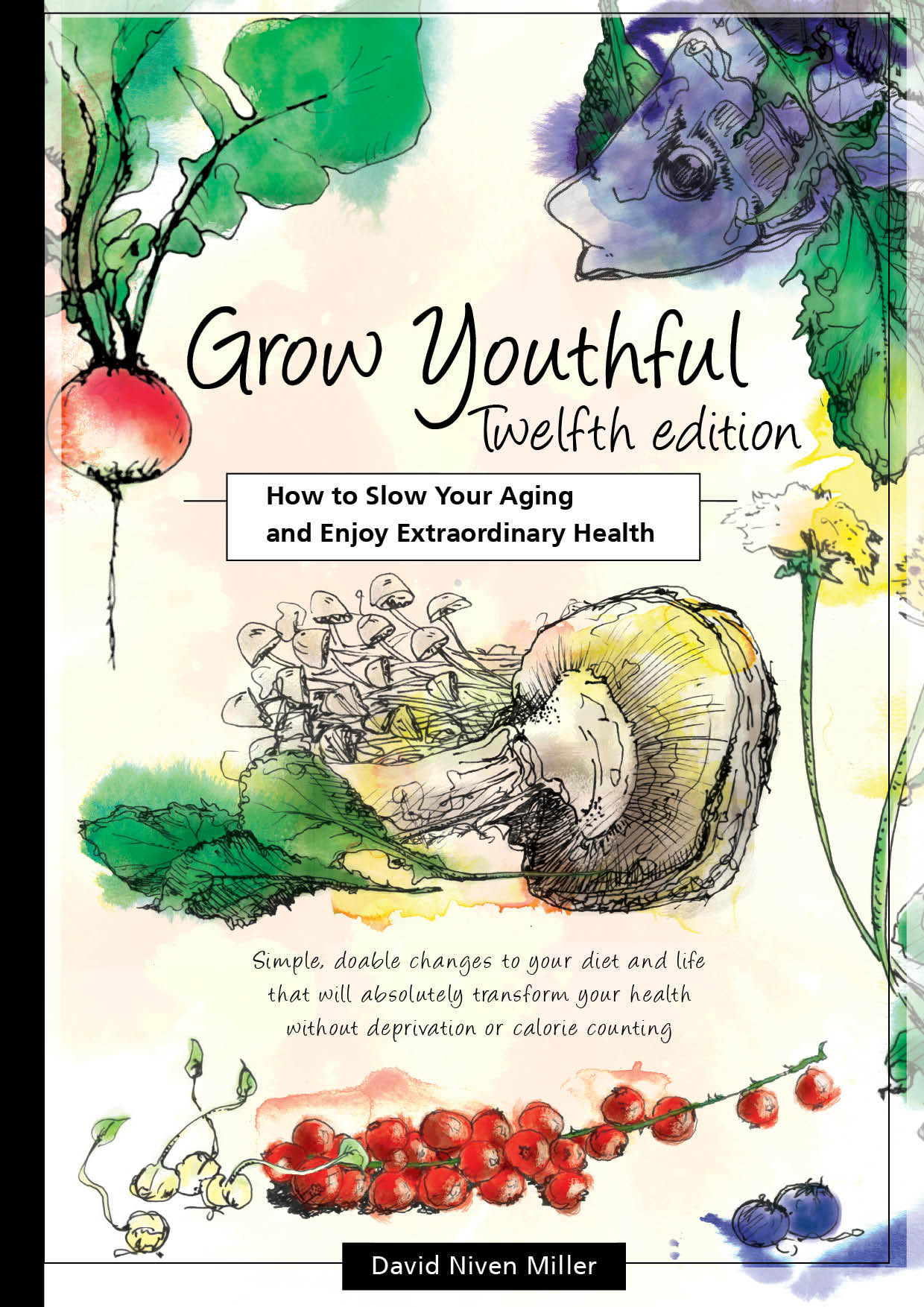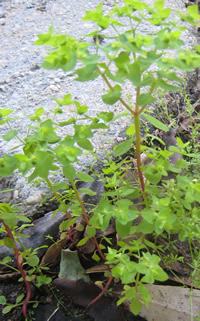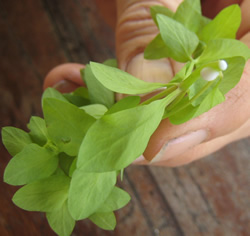
Milkweed (euphorbia peplus)
What is milkweed?
Milkweed as a remedy / treatment
How to use milkweed
Euphorbia peplus warnings
References
What is milkweed?
Two different genus of plant are called milkweed, and this causes confusion. If you search for milkweed in Wikipedia, the result is asclepias, a genus of herbaceous perennial plants that contain over 140 known species, all of which have a milky sap. This is NOT the plant used as a remedy by Grow Youthful.
The milkweed referred to in this article is euphorbia peplus, which Wikipedia also refers to as milkweed. E. peplus is also known as petty spurge, radium weed and cancer weed. It is native to most of Europe, northern Africa and western Asia. It is now found in most countries in temperate and sub-tropical regions including in Australia, New Zealand and North America, where it is regarded as an invasive noxious weed. Milkweed typically grows in cultivated arable land, gardens, and other disturbed land.


E. peplus is an annual plant with a height of 5-30 cm (2-12"). It has smooth hairless stems with a pink/red/purple tinge. The 1-3 cm long leaves are oval shaped, and it has green flowers.
Milkweed as a remedy / treatment
The plant's sap is toxic, especially to rapidly-replicating human tissue. The sap has long been used as a traditional remedy for skin lesions including cancer, skin cancers such as basal cell carcinoma, intraepidermal carcinoma and squamous cell carcinoma, and keratosis (especially actinic keratosis). It is also used for warts, corns, sunspots and other skin blemishes.
Pharmaceutical companies have identified and synthesised some of the active ingredients in milkweed. Their milkweed look-alike is called ingenol mebutate. Studies testing the effectiveness of ingenol mebutate for the treatment of actinic keratosis are promising (1, 2). However, I would strongly prefer to use genuine milkweed as the traditional, natural remedy for keratosis and skin cancers. The real herb is free if you grow it in your garden, and pharmaceutical drugs always come with additional side-effects.
A study (3) using real milkweed sap showed remarkable success in treating and healing various skin cancers. The sap was applied for three days, once per day. Quoting PMID: "The complete clinical response rates at 1 month were 82% (n = 28) for BCC, 94% (n = 16) for IEC and 75% (n = 4) for SCC. After a mean follow-up of 15 months these rates were 57%, 75% and 50%, respectively. For superficial lesions < 16 mm, the response rates after follow-up were 100% for IEC (n = 10) and 78% for BCC (n = 9)".
How to use milkweed
Cut off a small piece of stem from the plant. After a few seconds, a drop of milky-coloured sap will appear on the cut. Apply it directly onto the skin lesion.
Apply the sap twice per day. This is not a hard and fast rule - please let everyone know of your experience applying it in any other way.
You may need to apply the milkweed sap for between 2 to 7 days.
A typical sequence of healing is listed below. Obviously it will vary a lot, depending on what you are treating, the severity, your state of health and age, and other conditions.
Day 1: Redness surrounding the lesion, sometimes mild localised pain.
Days 2-3: Swelling, red area spreads. There may be some level of pain from the lesion.
Days 4-5: lesion may ooze or form a crater.
Day 6. Lesion starts to dry, no pain, there may be some itching.
Day 7. Scab starts to form.
Days 7-10. Scab heals and falls off.
Do not pick at the scab that forms. It will delay healing, may cause infection, and may cause a scar. It is tempting to pick but let it come off on its own.
Keratosis. When treating keratoses, on day 4 erythema (redness), flaking/scaling and crusting may peak.
Euphorbia peplus warnings
- The first time you use it only use a tiny dot of the sap, to see how you react and how the lesion reacts.
- Take care not to get the sap in your eyes. If even a tiny dab gets in your eyes, it can cause excruciating pain, redness, swelling and even blindness. Take care not to inadvertently rub your eye when handling the sap.
- Do not apply it to healthy skin.
- Do not spread it with your finger. Spreading it widely will cause swelling and inflammation.
- The lesion should be clean before you apply the sap. No skin cream etc.
References
1. Siller G, Gebauer K, Welburn P, Katsamas J, Ogbourne SM.
PEP005 (ingenol mebutate) gel, a novel agent for the treatment of actinic keratosis: results of a randomized, double-blind, vehicle-controlled, multicentre, phase IIa study.
Australas J Dermatol 2009, 50 (1): 16-22. doi:10.1111/j.1440-0960.2008.00497.x. PMID 19178487.
2. Lebwohl, M, et al.
Ingenol Mebutate Gel for Actinic Keratosis.
N Engl J Med 366;11, March 15, 2012.
3. Ramsay JR, Suhrbier A, Aylward JH, Ogbourne S, Cozzi SJ, Poulsen MG, Baumann KC, Welburn P, Redlich GL, Parsons PG.
The sap from Euphorbia peplus is effective against human nonmelanoma skin cancers.
Br J Dermatol. 2011 Mar;164(3):633-6. doi: 10.1111/j.1365-2133.2010.10184.x. Epub 2011 Jan 27.
